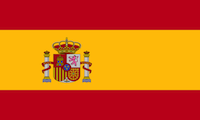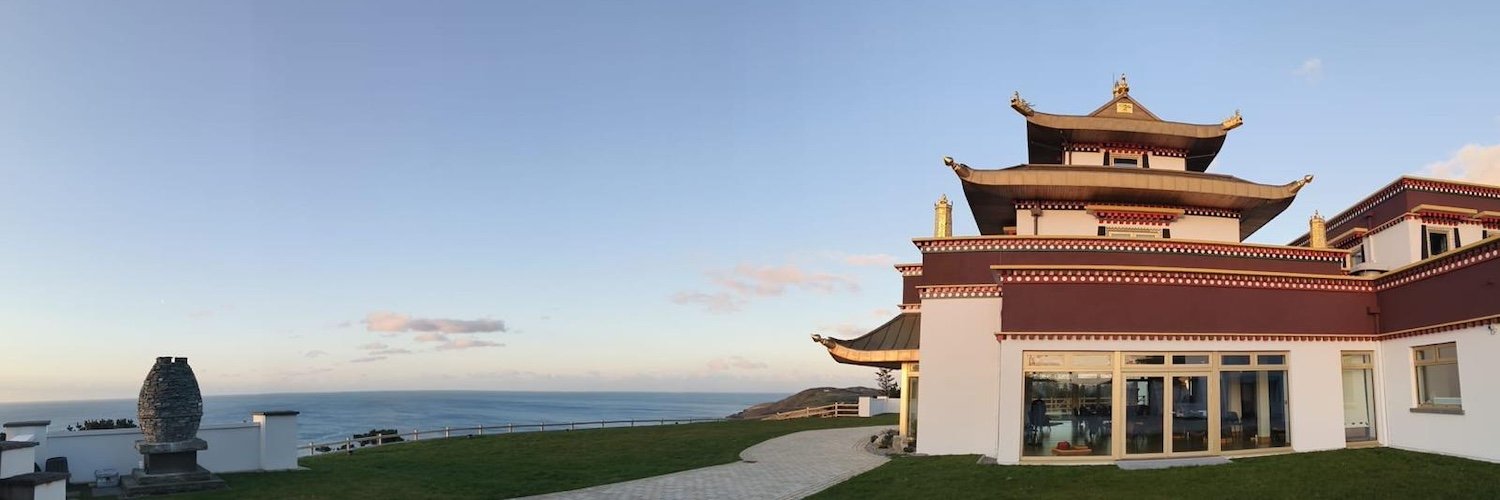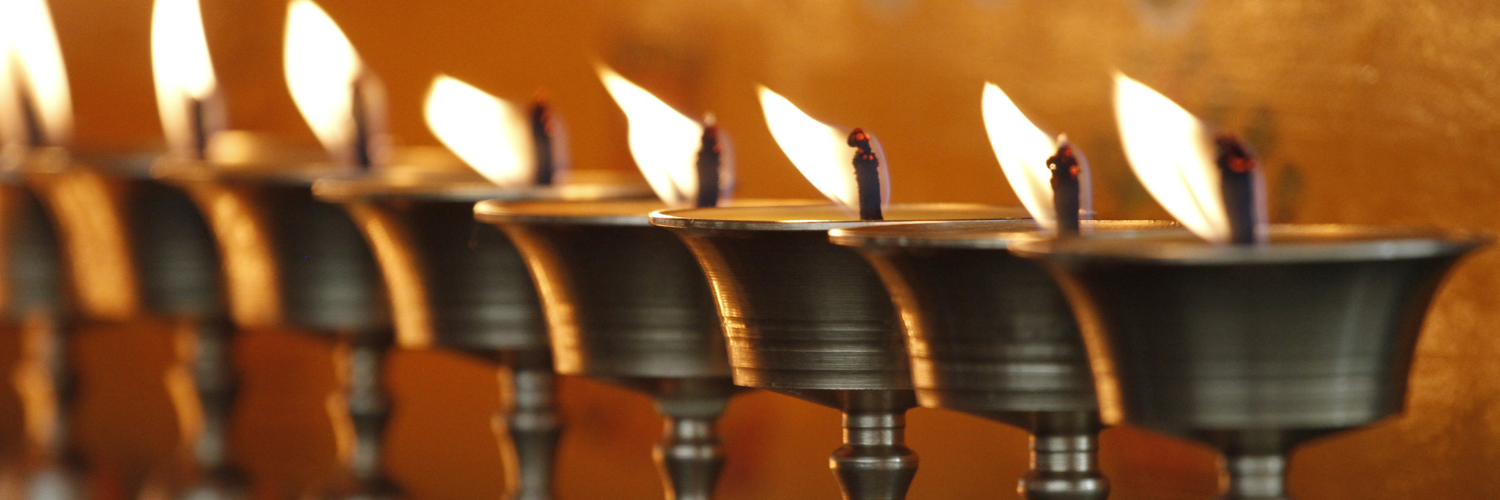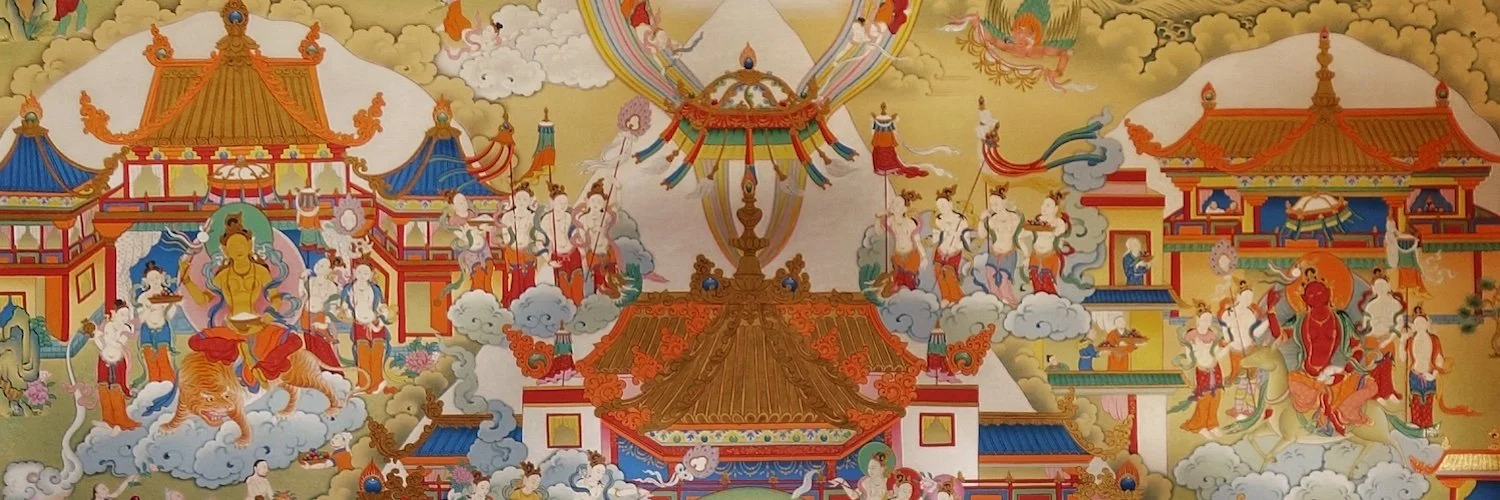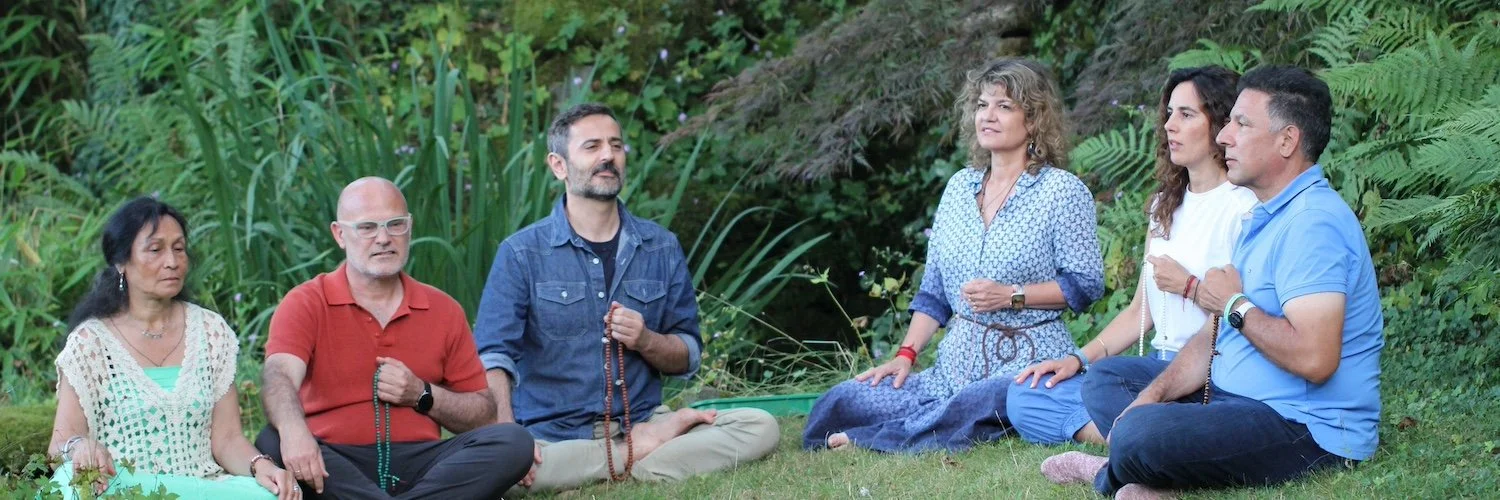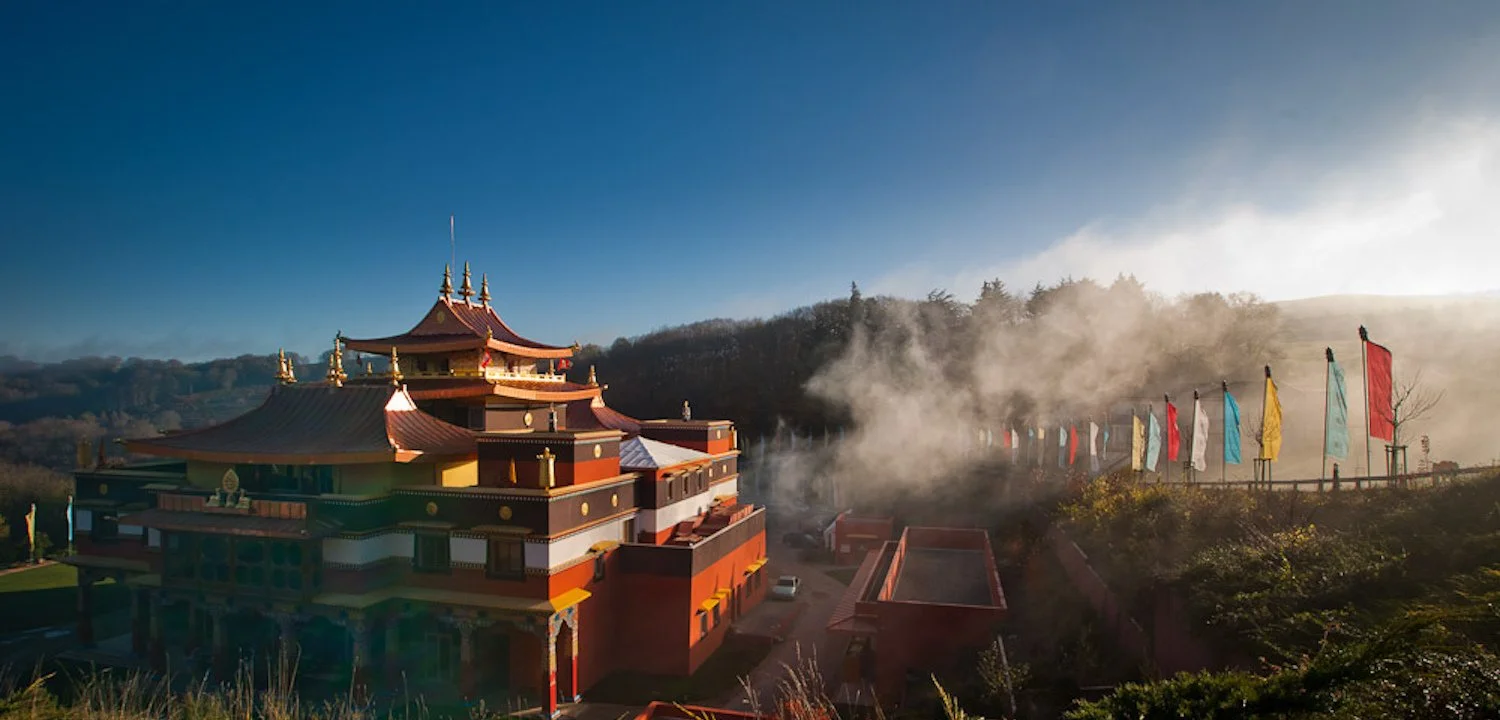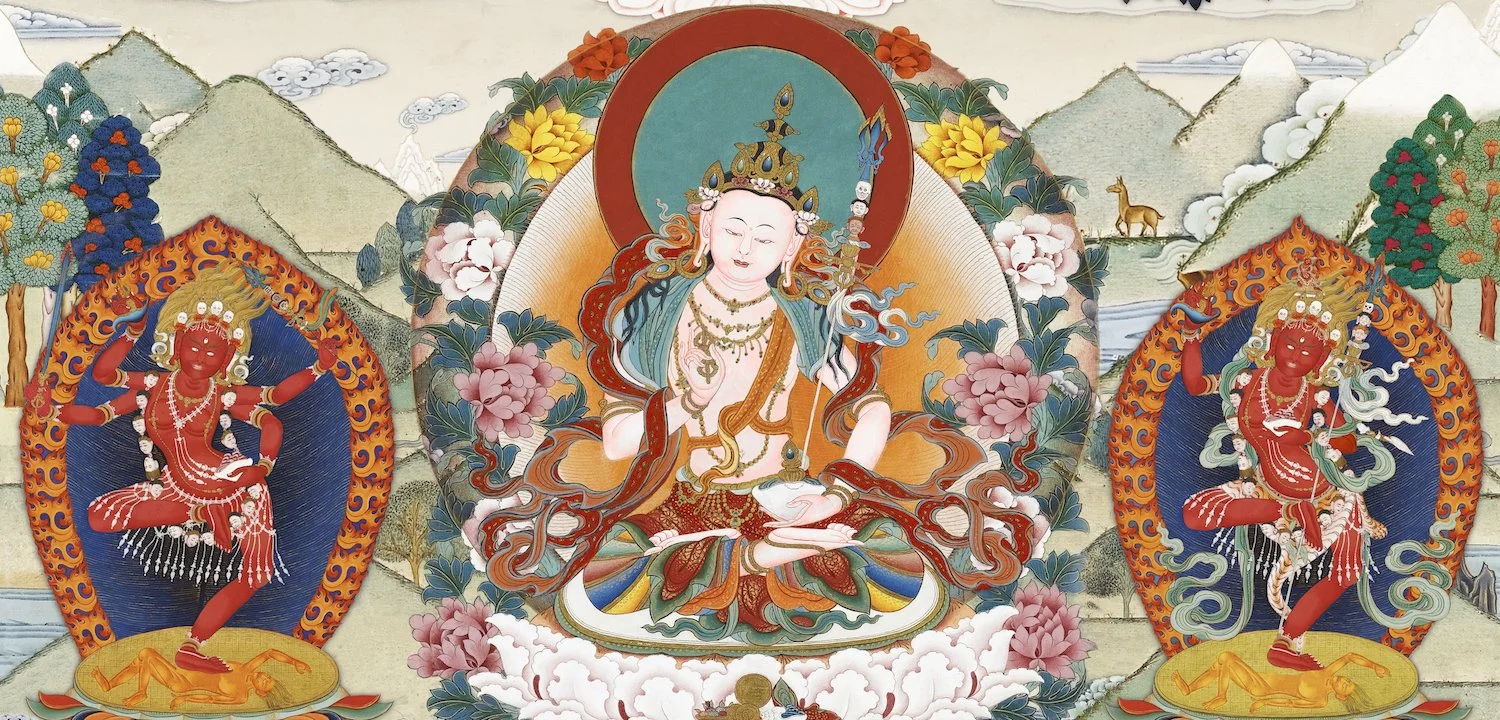Remembering the Queen of the Dakinis, Khandro Tsering Chödrön
Rigpa
2021 marks the 10th anniversary since the passing of the ‘Queen of the Dakinis’ Khandro Tsering Chödrön. Khandro was loved and respected as one of the great practitioners of Tibetan Buddhism in recent times. She was an inspiration and source of blessings to Buddhist practitioners everywhere.
“Khandro Tsering Chödrön’s exceptional wisdom, grace and compassion inspired so many of us. We aspire to follow her example.” Jetsün Khandro Rinpoche
Khandro was the spiritual wife of Jamyang Khyentse Chökyi Lodrö—and she was a true dakini, loved and respected by all the masters, including His Holiness the Dalai Lama and Dilgo Khyentse Rinpoche. Khyentse Rinpoche called her the ‘Queen of the Dakinis’.
“As Jamyang Khyentse’s spiritual consort, Khandro Tsering Chödrön provided a profound example of devotion and practice, inspiring many generations of masters and students. Her own humility and gentleness invoked the same qualities in all who were touched by her. Khandrola’s beautiful spirit manifested as a most profound spiritual achievement, enriching the world with her presence.” Dzogchen Ponlop Rinpoche
A blessing simply to be in her presence
Khandro spent the final years of her life at Lerab Ling with her nephew Sogyal Rinpoche and her sister Mayumla Tsering Wangmo. She inspired everyone she met with her wisdom, grace and compassion, and all were struck by the atmosphere that she created simply through her presence.
“She was extremely kind and possessed all the qualities of a genuine dakini described in the tantras. Her voice was beautiful, and whoever heard it was instantly captivated. In terms of her mind, she practised and perfected the teaching of Dzogpachenpo. She had not the slightest attachment or desire for money or wealth.” Orgyen Tobgyal Rinpoche
Alak Zenkar Rinpoche said: “There are many khandros, but she really had the most extraordinary qualities. Usually someone who is very beautiful, very young, and also the consort of a very high lama, might have a lot of pride. But Khandro-la didn’t have any kind of pride whatsoever. She was very humble, kind and respectful towards everybody. Another very important quality was that she never had any attachment to wealth and possessions. She kept her life very simple. These were her great qualities.”
Those who cared for her and spent time with her in the last years of her life said: “Khandro-la’s very being was a blessing to all who came in contact with her, because in one glimpse, one could receive this profound teaching from her, just because of who she was and how she was.” Another said, “To be with Khandro was like coming home. It was a feeling of freedom; of resting in yourself, of being content with yourself, and of being completely happy.”
Many personal retreatants who came to Lerab Ling merely upon seeing a photograph of her were struck by her presence and blessing—even if they were not Buddhist practitioners and had no knowledge who she was.
Loved and respected by many great masters
The immense respect and devotion that many masters and practitioners had for Khandro was profoundly evident following her passing. In the days before she passed away, eminent Tibetan Buddhist teachers came to visit her, as messages and tributes poured in from around the world, and ceremonies were conducted in her honour at monasteries in Tibet, India, Nepal and Bhutan. The dungshyü held after her passing at Lerab Ling and the ceremony to consecrate her memorial stupa in 2014, were attended by several thousand people, led by some of the foremost masters of the Tibetan Buddhist tradition including His Holiness Kyapgon Sakya Gongma Trichen Rinpoche, His Holiness Sakya Trizin, Khondung Gyana Vajra Rinpoche, Dzongsar Khyentse Rinpoche, Jigme Khyentse Rinpoche, Pema Wangyal Rinpoche, Orgyen Tobgyal Rinpoche, Rangdrol Rinpoche and Tulku Rigdzin Pema.
His Holiness Dalai Lama and Khandro Tsering Chödrön, Lerab Ling 2008
His Holiness the Sakya Trichen with Khandro Tsering Chödrön, Lerab Ling
The vast benefits and blessings of Khandro’s memorial stupa
Since the time of the Buddha himself, it has been customary to construct stupas to enshrine the relics of great masters—as symbols of their enlightened mind and because a stupa is a powerful means through which these teachers can continue to bring immeasurable benefit in the future. It is said that simply for us to set eyes on a stupa is enough to create a connection that will eventually lead to our enlightenment.
Khandro’s memorial stupa contains relics of Jamyang Khyentse Chökyi Lodrö and Khandro, along with countless scriptures and other precious objects. One of the most holy relics contained in the stupa is a relic of Tertön Namchö Mingyur Dorje (1645-1667). Tulku Rigzin Pema who built the stupa explained that there are four stupas around the world that contain relics of Namchö Mingyur Dorje, and there are many accounts of people being healed from incurable illnesses after circumambulating these stupas many times. Moreover, as Tulku Rigdzin Pema shared, Khandro’s stupa was built to bring peace and happiness to France, and the world at large and especially for this region where the stupa is located. And it is built so that the students may be able to eliminate obscurations and negativity and accomplish the two accumulations.
“The stupa was built to bring peace and happiness to France and the world at large … and so that students can eliminate all obscurations to accomplishing the two accumulations.” Tulku Rigdzin Pema
The stupa built in memory of Khandro Tsering Chödrön, Lerab Ling, France
Her Blessings Pervade Lerab Ling
Lerab Ling will forever be blessed by Khandro’s presence and her passing in Lerab Ling.
As Orgyen Tobgyal Rinpoche explained: “She showed all the signs of accomplishment as described in the teachings, and when she passed away her mind merged naturally into that great expanse of the buddha nature, like pouring water into water. Then she remained for several days in a state of meditation or tukdam. A great practitioner such as her merges the clear light of the path they have recognized during their practice in life with the clear light of the ground that dawns at the moment of death. It is said that a Dzogchen practitioner who is able to merge the luminosities in tukdam is accomplishing aeons of practice in a single instant, and goes on to attain enlightenment.”
Sogyal Rinpoche observed: “On account of her humility, Khandro was never one to give blessings to others. In 2006, she came to Lerab Ling and she made it her home, and the very fact that she lived here, I always felt, was itself the greatest blessing of all. Because of her presence, we all could feel that Jamyang Khyentse Chökyi Lodrö and Dilgo Khyentse Rinpoche were both here as well. Now that she has dissolved into the dharmadhatu, she has blessed Lerab Ling even more completely, for a place where a great master like her has passed away into the ultimate nature becomes extremely sacred, and utterly charged with blessings.”
“A place where a great master like her has passed away into the ultimate nature becomes extremely sacred, and utterly charged with blessings” Sogyal Rinpoche
Join commemorative practices:
Each year the Rigpa Sangha holds three days of practices to commemorate Khandro Tsering Chödrön. This year these practices will be held 5-7 May. Rigpa sangha members can follow here.
Tributes and memories of Khandro on Prajna:
This month’s new releases on Prajna are dedicated to Khandro Tsering Chödrön. Go to Prajna
Prayer for Khandro Tsering Chödrön’s rebirth
Prayer for the swift rebirth of Khandro Tsering Chödrön here
Much of the text from this post is drawn from The Rigpa Journal View, July 2011, ‘In Memory of Khandro Tsering Chödrön’ blog, Khandro Tsering Chödrön: In Memory of an Extraordinary Buddhist Master: Huffington Post



